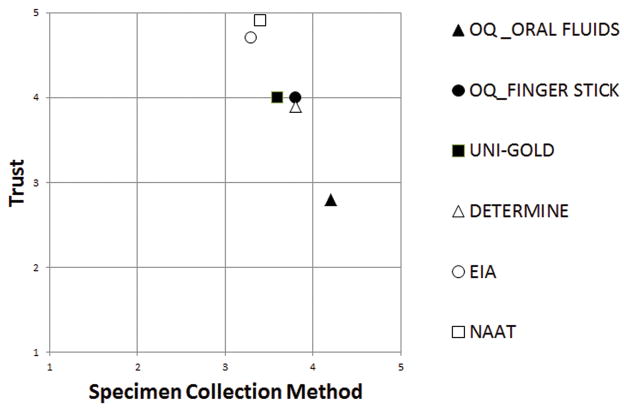Figure. Preference for specimen collection methods and trust in HIV tests are inversely related.
Subjects rated six study HIV tests on a scale from 1 to 5 based on preferences for the specimen collection method (x axis) and trust in that test based the timing of their visit relative to recent risks for HIV acquisition (y axis). Among 490 subjects, testing on oral fluids (▲) had the highest mean rating for specimen collection method (4.2), but OraQuick performed on oral fluids was the least trusted test (2.8). In contrast, venipuncture (○□) had the lowest scores among the specimen collection methods but pooled HIV NAAT was the most trusted test (4.9) The three rapid rests performed on fingerstick specimens were rated similarly on both scores.

